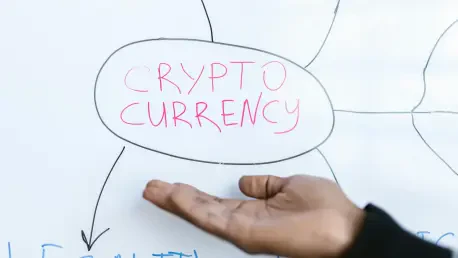I’m thrilled to sit down with Kofi Ndaikate, a seasoned expert in the fintech space with deep knowledge of blockchain, cryptocurrency, and the evolving landscape of decentralized finance. Kofi has a keen eye for emerging trends and a knack for breaking down complex concepts into actionable insights. Today, we’re diving into the exciting world of XRP price predictions and the innovative PayDax Protocol, exploring how these developments could shape the future of crypto investing and asset-backed lending. From bullish forecasts for XRP to the groundbreaking potential of tokenizing real-world assets, this conversation promises to unpack the opportunities and challenges in today’s dynamic market.
How do you view the recent prediction that XRP could see a 67% price surge by the end of 2025?
I think it’s an optimistic but plausible forecast. XRP has been gaining traction, especially with growing institutional interest and its role in facilitating cross-border payments. The 67% projection aligns with the broader bullish sentiment in the crypto market, particularly as Bitcoin continues to set the tone with its upward momentum. However, a lot depends on regulatory clarity and adoption rates. If those pieces fall into place, XRP could easily exceed expectations.
What impact do you think institutional adoption, such as through specialized ETFs, might have on XRP’s value in the coming years?
Institutional adoption is a game-changer for any cryptocurrency, and for XRP, it could be the catalyst that drives mainstream acceptance. ETFs, for instance, lower the barrier for traditional investors who might be hesitant to dive directly into crypto exchanges. This influx of capital can significantly boost liquidity and stabilize price volatility, creating a more robust market for XRP. It’s not just about price—it’s about credibility and long-term sustainability.
Given XRP’s current trading price around $2.99 and a recent 5.2% gain, how sustainable do you think this momentum is through the ongoing bull cycle?
The current momentum is encouraging, especially with XRP showing steady gains. At $2.99, it’s in a strong position, reflecting positive market sentiment. However, sustaining this through a bull cycle depends on broader market dynamics and XRP-specific developments like partnerships or legal resolutions. If the crypto market as a whole continues to rally, I believe XRP can ride that wave, but investors should remain cautious of sudden corrections.
Do you think the target of XRP reaching $5 by December 2025 is achievable, and what potential hurdles might stand in the way?
Hitting $5 by the end of next year is ambitious but within reach if certain conditions are met. Key drivers would include sustained institutional interest and positive regulatory outcomes. However, hurdles like market saturation, competition from other altcoins, or unexpected downturns in the global economy could slow progress. It’s a realistic target with the right momentum, but not a guaranteed one.
With Bitcoin trending toward new highs, how do you see these larger market movements influencing XRP’s performance in the near future?
Bitcoin often acts as the bellwether for the crypto market, and its push toward new highs tends to lift other major coins like XRP. This correlation can bring increased attention and capital to altcoins as investors diversify their portfolios during a bull run. However, XRP’s performance will also hinge on its unique value proposition—its utility in payments and remittances could set it apart if market participants recognize that distinct advantage.
Can you break down the core mission of PayDax Protocol and how it addresses the liquidity challenges faced by crypto holders?
PayDax Protocol is tackling a real pain point for crypto investors: the need for liquidity without sacrificing long-term holdings. The core idea is to allow users to leverage their assets—whether it’s crypto like Bitcoin or real-world items like luxury goods—by tokenizing them to secure loans in stablecoins like USDT. This means you don’t have to sell your valuable holdings to access cash for new opportunities, which is a huge shift in how we think about asset management in DeFi.
How does PayDax enable the tokenization of real-world assets like gold or luxury watches, and what does the loan process look like?
PayDax has built a system where physical assets can be digitized into tokens on the blockchain, representing ownership and value. For something like a luxury watch or gold, the asset is appraised and authenticated, often through partnerships with trusted entities. Once tokenized, it’s used as collateral for a loan, typically in USDT, with a high loan-to-value ratio. The process is streamlined to ensure the asset remains secure while the owner accesses liquidity, blending traditional asset value with DeFi innovation.
What advantages does PayDax offer someone who, for example, tokenizes a high-value item for a loan, compared to traditional selling or borrowing methods?
The biggest advantage is that you retain ownership of your asset while accessing near-equivalent value in liquidity. Unlike selling, where you lose the potential for future appreciation, or traditional borrowing, which often involves lengthy processes and lower loan amounts, PayDax offers speed and high loan-to-value ratios. Plus, since it’s on-chain, there’s transparency and often lower fees compared to conventional financial institutions. It’s a win for preserving wealth while meeting immediate needs.
For liquidity providers on PayDax, the platform offers up to 15.2% APY—how does this stack up against traditional savings options?
That 15.2% APY is a standout compared to traditional bank savings accounts, where you’re lucky to get 1-2% in most cases, even with high-yield options. PayDax’s returns reflect the higher risk-reward nature of DeFi, where liquidity providers fund loans and earn interest from borrowers. It’s a compelling alternative for those comfortable with the crypto space, offering yields that can outpace inflation, unlike the paltry returns from conventional banking.
Can you explain the Redemption Pool feature on PayDax and how it enhances security for lenders with returns up to 20% APY?
The Redemption Pool is a unique safety net for lenders on PayDax. It’s essentially a peer-to-peer insurance mechanism where participants contribute capital to cover potential loan defaults. In return, they can earn up to 20% APY, which is a significant incentive. This on-chain system integrates lending and risk mitigation, ensuring lenders have a layer of protection while still benefiting from high returns. It’s an innovative way to balance opportunity with security in DeFi.
How do partnerships with established players like Chainlink for valuations and Jumio for verification strengthen trust in PayDax?
These partnerships are crucial for building credibility. Chainlink’s oracles provide reliable, real-time data for asset valuations, preventing issues like mispricing that could undermine loans. Jumio’s expertise in identity verification ensures borrowers are vetted, reducing fraud risks. Together, they create a foundation of trust, showing that PayDax isn’t just another DeFi project but one backed by robust, industry-standard tech and processes.
With collaborations involving asset authentication and secure storage, how does PayDax ensure the safety of tokenized real-world assets?
PayDax takes asset security seriously by partnering with reputable firms for authentication and storage. High-value items are verified by experts to confirm their legitimacy before tokenization, and physical storage solutions ensure these assets are safeguarded against theft or damage. This dual approach—rigorous vetting and secure custody—reassures users that their tokenized assets are backed by real, protected value, bridging the gap between physical and digital worlds.
What is your forecast for the future of platforms like PayDax in the broader DeFi and real-world asset tokenization space?
I’m incredibly bullish on platforms like PayDax that merge DeFi with real-world asset tokenization. As more people recognize the potential to unlock liquidity from everyday valuables without selling them, we’ll see exponential growth in this sector. By 2030, I expect tokenization to become a mainstream financial tool, with DeFi protocols like PayDax leading the charge in democratizing access to credit and investment opportunities. The key will be balancing innovation with regulation to ensure trust and scalability.









